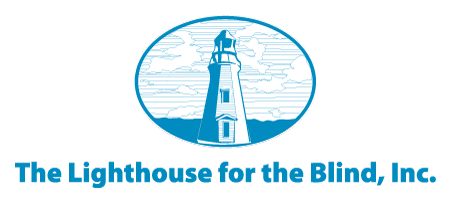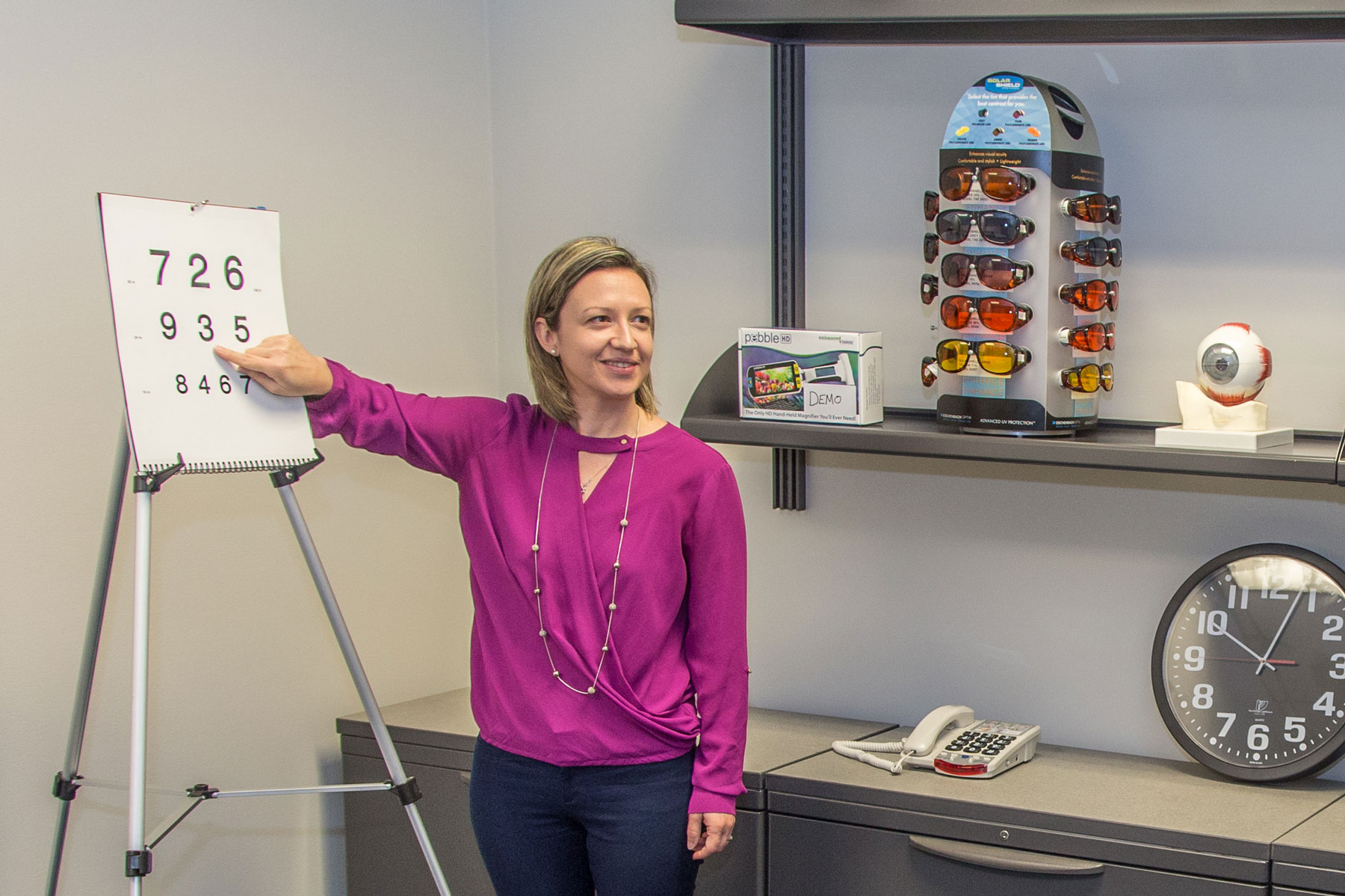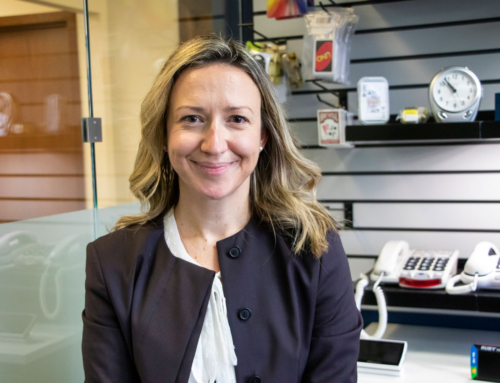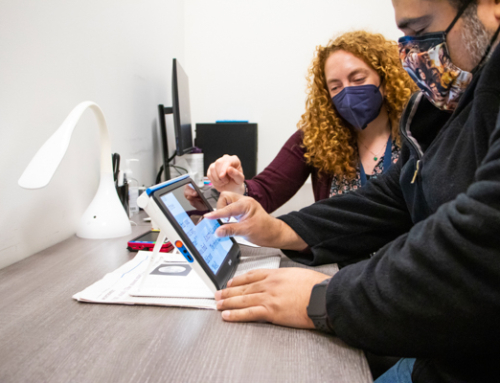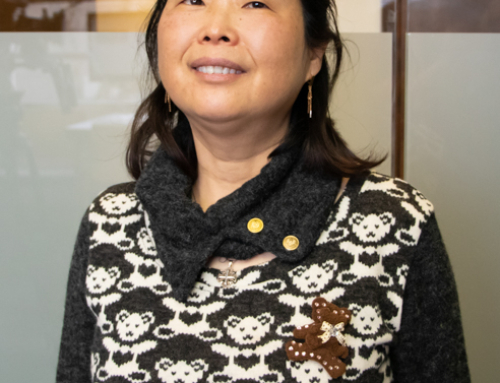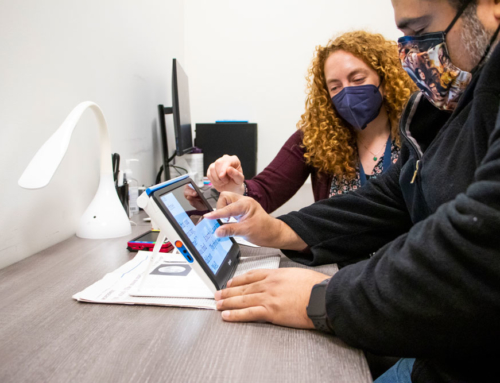Early this year, The Lighthouse for the Blind, Inc, was getting ready for an exciting new expansion to their services to fill a huge gap in the community – low vision services. After Sight Connection (a nonprofit focused on providing services to people with vision loss) closed their doors in 2019, many aging Seattle seniors were left with nowhere to turn for support adjusting to vision loss. According to Johns Hopkins Medicine, about 4 million Americans live with low vision. In King County alone, it’s expected that more than 34,000 residents have a visual impairment. This number is only expected to increase as the Baby Boomer generation continues to age into retirement, making the need for low vision support immense. Unfortunately, just before the grand opening of the new Lighthouse Low Vision Clinic, Store, and Rehabilitation Services, coronavirus hit Washington state. In-person meetings with a highly at-risk population were no longer possible due to safety concerns.
Adapting and Overcoming
“Figuring out how to adapt to the new norms and to make the clinic accessible with the Lighthouse mission being in our forefront was our number one priority,” noted Dr. Anna Shagas, Low Vision Optometrist at the Lighthouse. The Lighthouse came up with an innovative alternative plan, and decided to open via telehealth in June, instead.
While the rest of the US has largely shifted to virtual meetings, proposing telehealth visits for people with low vision was especially delicate. The target population for low vision services are aging seniors, who are not always comfortable with technology.
“As we prepared for the opening, we reached out to other low vision optometrists and they were very reluctant to go this route because only a small number of their patients agreed to have a telehealth appointment thus far,” Dr. Shagas commented. However, the Low Vision Services team at the Lighthouse was adamant and came up with a comprehensive plan for not only how to conduct appointments virtually, but also how to communicate with patients beforehand to ease their worries.
With over 50 successful appointments so far, and 42 people on the waitlist, telehealth visits at the Lighthouse have not only been successful but are thriving.
Thus far, the average patient age seen within the Lighthouse Low Vision Clinic has been 79 years old, with many of the patients being over 90. The oldest patient, being 99 years old!
How it Works
“The low vision evaluation is split into two telehealth visits. The initial visit is focused most on history, goals and evaluation using charts for further functional vision assessment where we figure out what type of low vision aids would work best for the patient,” Dr. Shagas explained.
“It is certainly not the same as physically being in the room with the patient and there are a few tests that we can’t perform, however we’ve been able to help many patients thus far because there are other benefits to telehealth visits as well.”
“The second visit is focused on using the low vision devices that we send to patient’s home. A great benefit to telehealth is the ability for the patient to be in their own home to trial the low vision aids and techniques that work the best for them. With telehealth, we get a better idea of the patient’s day to day environment leading to a more successful outcome in the rehabilitation process.”
Moving Forward
Due to the resounding positive response for our services in the community, the Low Vision Services team has spent time developing comprehensive safety protocols and is excited to announce the opening of in-person appointments.
Starting October 21, 2020 the Low Vision Clinic will be open for in-person visits each Wednesday, by appointment only. Lighthouse Low Vision Clinic is located at The Lighthouse for the Blind, Inc. main campus in Seattle, WA.
About Lighthouse Low Vision Services
Low vision is defined as vision decrease that cannot be corrected with conventional glasses, contact lenses, medical or surgical intervention to the point that it interferes with performance of daily living tasks. Lighthouse Low Vision Clinic, located in Seattle, offers functional vision assessments by our residency trained optometrist, along with rehabilitation training by our certified occupational therapist. Working collaboratively, the clinic team crafts individualized goals and finds ways to maximize your functional vision for performing daily living tasks. If you would like to be to be seen in the clinic, a referral from an eye care provider is required with a copy of the most recent eye exam.
In addition to telehealth appointments, we are also proud to continue our work in Community Low Vision Rehabilitation Services, which includes independent living & safe travel. Instructors come to your home and work with you to learn new ways to perform the tasks of everyday living: appliance use, medication management, telephone and time telling techniques, and reading and writing. Lighthouse Orientation and Mobility Instructors help you to achieve your travel goals, such as moving around your home and neighborhood safely and independently or traveling by bus or paratransit. We can help you learn new skills to help with adjustment to vision loss.
